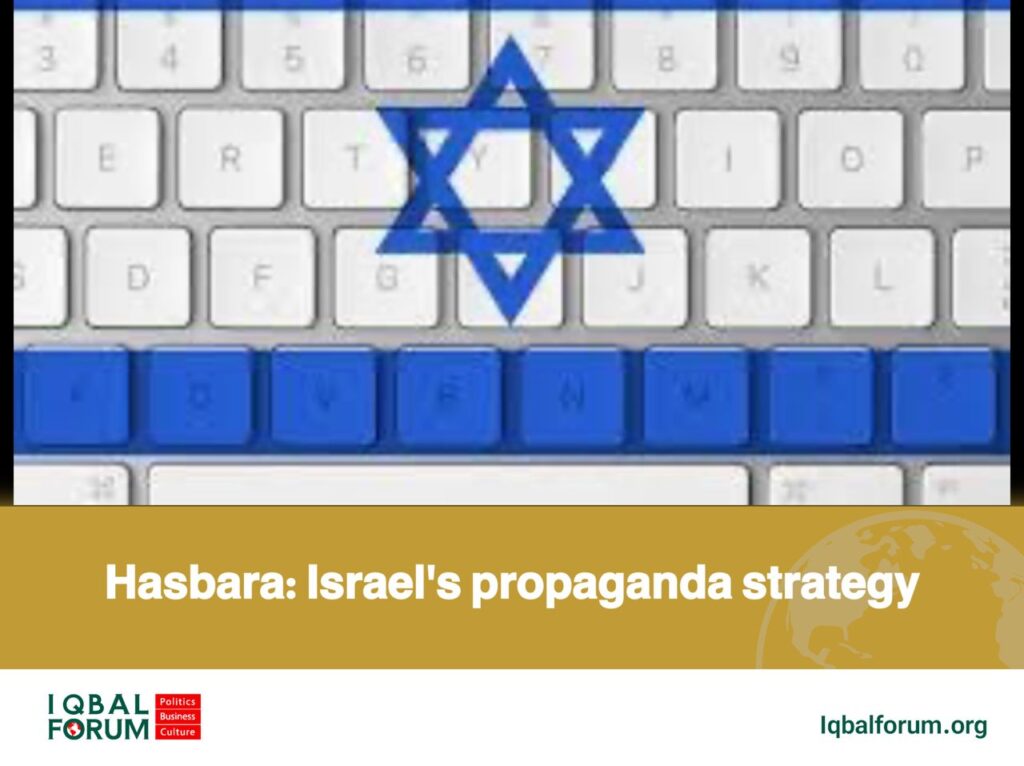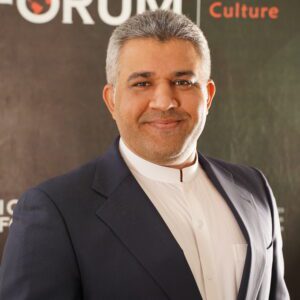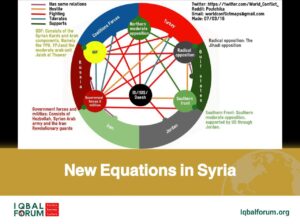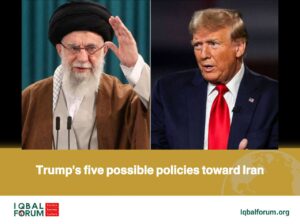Hasbara, a Hebrew word meaning “explanation” or “enlightenment,” refers to Israel’s propaganda efforts to legitimize its actions and influence global public opinion. This strategy is implemented through content production on social media, media houses, lobbying, and training of media activists.
Hasbara was developed in the early 20th century by Nahum Sokolov as a propaganda strategy to present Israel as a resilient victim. After World War II and the Holocaust, it expanded within the framework of legitimizing the creation of a Jewish state, and its three main propaganda axes included the victimhood of the Jews, the necessity of establishing Israel for their survival, and the existence of a permanent threat against Israel.
After the establishment of Israel in 1948, Hasbara was initially implemented through traditional diplomacy and print media, but with the advancement of technology, the Internet, and digital media, it gained broader dimensions.
Until 2021, the Israeli Ministry of Strategic Affairs was responsible for Hasbara. However, after the ministry’s dissolution, this mission was transferred to the Foreign Ministry, and under the leadership of Yair Lapid, a $30 million project was launched to support foreign entities.
These entities included influencers, media watchdogs, and pro-Israel groups on social media and global media houses that published content aligned with Israel’s approaches.However, with Benjamin Netanyahu’s return to power and Ron Dermer’s appointment as Minister of Strategic Affairs, the ministry was reactivated and pursued Hasbara’s goals alongside the Foreign Ministry.
Public diplomacy in the Israeli regime, often referred to as Hasbara, includes paying special attention to the media and the digital space, cultural cooperation, student exchange programs, sports diplomacy, and humanitarian aid to improve Israel’s image in the world public opinion.
Israeli embassies, consulates, and powerful lobbies, such as AIPAC in the US and EJC in Europe, also play a key role in aligning these countries’ foreign policies with Israel’s goals.
The Foreign Ministry mainly pursues Hasbara, but it is not entirely a subsidiary of this ministry; instead, it is also pursued by the National Propaganda Headquarters unit of the Prime Minister’s Office. In other words, Hasbara can be described as a “cross-sectoral strategy” designed to defend Israel in the international arena because hasbara projects are consistently implemented in coordination with the Foreign Ministry, the Ministry of Strategic Affairs, the Prime Minister’s Office, the Ministry of Diaspora, the Ministry of Defense, the Israeli Army, etc. When necessary, all of these institutions are accountable for how Hasbara is implemented.
For instance, Galit Distel-Atbarian, the former Minister of Intelligence, appeared in an interview with Israel’s Channel 12 four days after October 7 and, in response to the presenters’ criticism of Hasbara’s performance during this period, said: “We opened dozens of pages that no one understood was for us, we produced dozens of videos that no one understood were our work. We sent media teams to influencers, especially those who have an audience abroad. We created the message “Hamas is ISIS,” and today, we saw that they have spread it all over the world. I will not reveal the names of the people, he continued: but I can say that thanks to the teamwork, we were able to create a briefing group for the press and media houses because I cannot explain many of the things I do. Our work is not public diplomacy; it is influence, and I cannot scream our successes.”
Redefining Truth and Managing Narratives in Crisis:
After October 7, 2023, Israel, in parallel with its military operation in Gaza, also tried to strengthen its narrative on the media front. This strategy followed three main messages:
- Creating a sense of security among the people inside Israel with the message “We are strong, and we will protect you.”
- Deterring Israel’s enemies with the message “If you attack, we will respond with force.”
- Gaining legitimacy in the international community with the message “We are victims, and we are only defending ourselves.”
Several official narratives were also reinforced to support the agendas :
- Israel is the victim of an unprecedented terrorist attack and is authorized to take any action in self-defense.
- Hospitals, schools, and media offices are Hamas bases, and their targeting is inevitable.
- UNRWA is linked to Hamas, and some of its staff participated in the October 7 attacks, so international aid to it should be stopped.
- The increase in civilian casualties is the result of Hamas’ use of human shields, not Israeli military policies.
Reports of Hamas’s violence, such as the mass rape of Israeli women, the beheading of infants, and mass executions, fueled a sense of danger and the need for widespread military action. These narratives helped Israel control public opinion in the early days of the war. The atmosphere of crisis also reduced protests against the government within Israel.
Information Management and the Role of Digital Media:
In the digital space, social networks such as Twitter, Facebook, and Instagram removed anti-Israeli content and blocked the accounts of Palestinian activists and independent journalists.
On the battlefield, the offices of international media outlets such as Al Jazeera and the Associated Press were bombed in Gaza, and journalists were targeted. The Committee to Protect Journalists has described the war as the deadliest for journalists.
Israel expanded its official narratives in the global media by setting up news studios in different languages, conducting more than 1,500 interviews, and inviting 4,000 foreign journalists.
In addition, special conditions were provided for North American students to travel to Israel, meet with officials, and, upon their return, defend Israel’s positions in their universities.
New Challenges and Weaknesses of Hasbara:
The emergence of independent media and citizen journalists has made it more challenging than ever for Israel to control the narrative. Al Jazeera and social media, with their constant and extensive coverage, have become key players in the media competition, and tools such as VPNs, decentralized platforms, and encrypted messengers have helped users circumvent censorship.
Palestinian users and human rights advocates have used these platforms to counter the official Israeli narrative.
Some analysts have seen this as a relative defeat for Hasbara, as for the first time, Israel’s public image in some parts of the world has been severely tarnished.
Continuing efforts to manage global image:
As international criticism mounts, Israel has allocated $150 million by 2025 (20 times more than before) to change global perceptions of its military actions.
Israeli Foreign Minister Gideon Sa’ar stated: “I am determined to make a difference. “Every small amount allocated to this goal is an investment, not an expense, and will strengthen Israel and its place in the world.”





